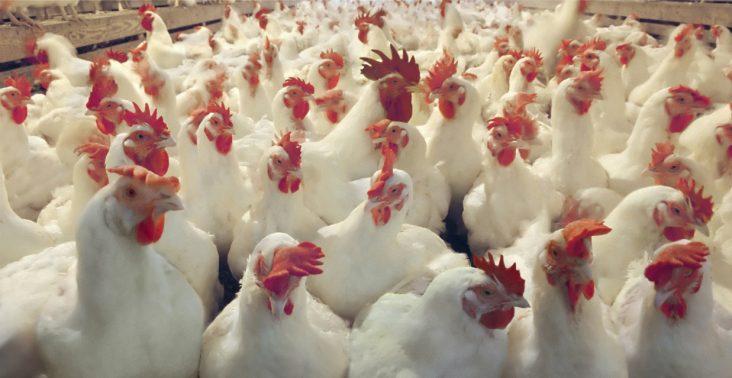Arkansas mostly spared from worst poultry flu outbreak ever
by January 5, 2023 3:00 pm 941 views

The worst outbreak of highly pathogenic avian influenza in the U.S. ever disrupted production and led to increased poultry prices in 2022. An estimated 53 million birds nationwide have been impacted by the disease this year.
The disease ravaged other states and Canadian provinces starting in spring and Arkansas’ poultry farms were spared from any outbreaks. That changed in October, with the detection of a first 2022 case in Madison County. As of December, three flocks in the state had tested positive for avian influenza, or HPAI.
The disease has been found in commercial and backyard flocks in 46 states and in wild birds in 47 states, according to the U.S. Department of Agriculture’s Animal and Plant Health Inspection Service. As of Dec. 7, 52.87 million birds have been affected, making this the most significant outbreak in U.S. history in terms of number of birds affected.
“Arguably, it wasn’t the best year for poultry production in general in the U.S.,” said Jada Thompson, assistant professor of agricultural economics and agribusiness for the Arkansas Agricultural Experiment Station, the research arm of the University of Arkansas System Division of Agriculture.
Thompson said avian influenza caused serious logistical and marketing challenges for Arkansas producers.
“Farms that were in control areas had limited movements on and off farm, which leads to disruptions in normal business, causes stress and may lead to financial losses related to productivity or timing of processing,” Thompson said.
Thompson said the increased demand for replacement birds resulting from HPAI also contributed to supply chain challenges.
“HPAI was a lot more concentrated in turkey layer farms, because they are more susceptible to it than broilers,” she said. HPAI spreads more easily in turkeys and older birds like turkeys and layers who spend more time on the farm than broilers.
While HPAI was a challenge for both broiler and turkey producers alike, there was an increase in hatchings, she said.
“We did see an increase in hatching for broilers and a slight increase for turkeys,” Thompson said. “Producers started putting eggs in incubators to try to adjust for HPAI.”
This industry’s response in 2022 differed from 2015, which had been the worst avian influenza year until 2022.
“When we first had HPAI in 2015, we were a little behind trying to figure out what was happening,” Thompson said. “This year had a lot of proactive measures that were taken to try to address supply shortages and to mitigate them as much as possible.”
Other challenges, along with HPAI, caused the price of poultry products to increase for consumers.
“We also saw a hike with inflation, which added to the supply chain disruptions,” Thompson said. “Fertilizer has gotten expensive, which makes producing corn more expensive. That makes feeding birds more expensive.”
Broiler prices have gone up 47% during the last year, according to Thompson. Turkey prices went up approximately 27% in 2022.
As HPAI lingers in late 2022, Thompson said that surveillance and monitoring for HPAI will likely continue into 2023.
“I think there will likely be some adjustment in the number of birds to try to offset the potential losses in 2023,” she said. “There are still a lot of unknowns which both help or hurt the poultry markets.
“I would like to be hopeful that the industry’s preemptive measures will help reduce the spread of HPAI and can adjust to the market conditions quickly to maintain their business continuity for producers and help ease some of the pressures on consumers,” Thompson said.
Poultry is a significant agriculture sector in Arkansas. The state produced $3.9 billion in broilers and $443 million in turkeys in 2021, according to the USDA’s National Agricultural Statistics Service. Chickens remain the primary protein source for many populations around the world. It was estimated that 25.9 billion chickens were raised worldwide in 2021, according to the U.N. There were about 520 million chickens in the U.S. in 2020.
